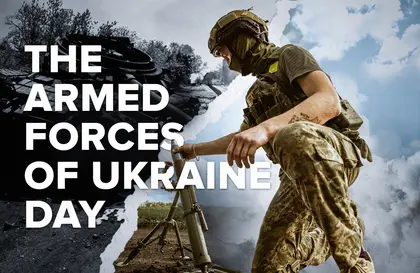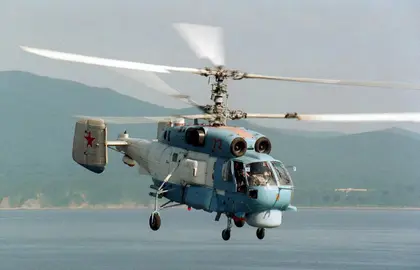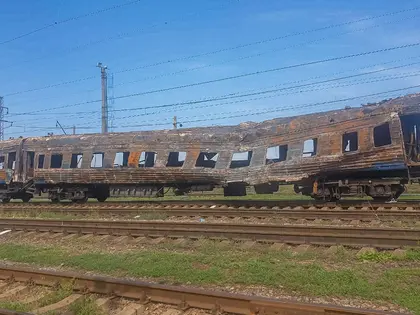Today, on Dec. 6, Ukraine celebrates the 31st anniversary of the Armed Forces of Ukraine. Kyiv Post highlights the key achievements of the Armed Forces of Ukraine (AFU) in this war.
Hostomel airfield battle
The most dramatic battle at the outset of the war took place in and around Hostomel airfield about 15 kilometers northwest of Kyiv. According to Ukrainian government accounts, the Russian goal was to capture the airfield and use it as a base for landing powerful reinforcements, which would race into the capital, decapitate the government, and take over.
The landing of 20 to 30 aircraft, depending on the source, took place mid-morning on Feb. 24. Ukrainians shot down two transport and one attack helicopter with hand-held guided missiles. A couple of hours later, Ukrainians brought up artillery and, by mid-afternoon, a unit of their own helicopter-carried infantry had recaptured the airfield by early evening, according to official reports.
However, a Russian infantry force appeared to be still present and capable of fighting, complicating communications between the capital and forces to the north.
The Battle for Kyiv
From the very beginning of the invasion, Russian troops attacked the northern regions of Ukraine in order to occupy Kyiv. The aggressor planned to seize the Ukrainian capital in two or three days. Even before the offensive started, U.S. officials deemed Kyiv to be doomed: Chairman of the Joint Chiefs of Staff Gen. Mark Milley told lawmakers that Ukraine’s capital could fall within 72 hours if a full-scale Russian invasion of Ukraine took place.

‘No More Flowers’: Says Ukrainian Flower Farm After Owner Dies in Battle
The Russian plans were thwarted by Ukrainian defenders, who launched Russian troops deep into the territory and then began cutting its supply routes, ambushing it, and simply covering it with fire. Russian troops, beaten and exhausted, were forced to leave the Kyiv and Chernihiv regions on March 29.
The Kremlin claimed its actions as “increasing mutual trust and creating conditions for negotiations,” without mentioning the fact that the AFU had encircled the Russian Federation (RF) forces and obliged them to retreat.
Russia’s Moskva flagship sinks
Since the full-scale invasion, the Ukrainian army has surprised experts and partners with unexpected blows more than once. One such “plot twist” took place on April 12: the flagship of the RF’s Black Sea Fleet, the Moskva, was hit by Ukrainian Neptune missiles. The Moskva flagship played a key role as both a command ship and an air defense unit.
The Russian Ministry of Defense was initially evasive about what had caused “a fire” on board the missile cruiser, which then detonated the ammunition on board.
Although Russia has not formally acknowledged that the cruiser was attacked by Ukrainian missiles, its destruction was presented as a “pretext” for all-out war. Public figures were publicly calling for a retaliatory strike against Kyiv, including the use of nuclear weapons.
“Gesture of goodwill” – RF forces flee from Snake Island
Russian forces occupied the strategic Snake Island in the western Black Sea on the first day of the war in Ukraine.
The island has been intensely fought over by both sides, with Ukraine carrying out large attacks on the Russian occupiers there for four months. The outpost became a symbol of Ukrainian resistance after a radio exchange, in which Ukrainian soldiers used an expletive in response to Russian demands from the Moskva missile carrier to surrender, went viral at the start of the war.
On June 30, the Russian Defense Ministry announced a “gesture of goodwill.” The troops of the occupier left Snake Island. The victory allowed Ukraine to partially open its ports, as well as to organize a grain corridor for export.
The ongoing Donbas defense
In Putin’s video message, which marked the beginning of a “special military operation,” the Russian President claimed that the liberation and protection of the population of Russian-occupied territories of Ukraine was the main reason for the invasion.
During nine months of the war, Russian occupiers have failed to complete this aim. The Russian army captured the Luhansk region but at the cost of huge losses in equipment and manpower.
The battle for the Donetsk region continues, the Russian troops have not captured a single major city, apart from Mariupol, which has been turned into ruins.
Now the occupiers are focusing their efforts on Bakhmut, where they have made no significant progress, notwithstanding the statements of their propagandists.
The counteroffensive to liberate the Kharkiv region
When Kyiv’s lightning offensive rolled eastward across the Kharkiv region in mid-Sept. against reportedly weak resistance, AFU troops liberated dozens of villages and reached the border with Russia.
In only seven days, AFU columns recaptured more than 3,000 square kilometers of formerly Russia-held territory and liberated more than 30,000 Ukrainian citizens living in more than 3,000 towns and villages. Most, located in far northeast Ukraine, had been under RF control for almost six months.
Ukrainian official and social media sources told of chaos and confusion on roads leading eastward from the towns of Kupiansk and Oskil, and the city of Izyum, with Russian units fleeing.
At first, the Kremlin tried to pass off Russia’s failure in Kharkiv as a “gesture of goodwill” and an “organized withdrawal of Russian troops from the Kharkiv region to the Donetsk region.” But this time, the authorities faced massive criticism from all strata of the Russian population.
Kherson recaptured
Top Moscow generals, on Nov. 9, announced the withdrawal of all RF troops from the key port city of Kherson and the entire right bank of the Dnipro River, marking one of the worst setbacks yet in Putin’s attempt to annex Ukrainian territory.
Two days later, on Nov.11, the RF army’s high command claimed its troops in the Kherson sector had largely succeeded in escaping from an exposed bridgehead on the north side of the Dnipro River, as dozens of outlying villages and hundreds of square kilometers of occupied territory were liberated by advancing Ukrainian troops.
The RF military’s ability to supply ground units in the Kherson perimeter had become increasingly shaky following continual AFU bombardments – using mostly U.S.-manufactured, precision-guided munitions – of three key bridges and one hydroelectric dam linking the bridgehead on the north bank of the river with RF army depots and reserves on the south bank.
Kherson had been the only regional capital captured by Russia in the Kremlin’s eight-month war with Ukraine. The Kremlin, with great fanfare on Sept. 30, announced Russia had annexed the Kherson region and that the some 500,000 residents still living there had become Russian citizens, and that Russian state presence would be “eternal.”
You can also highlight the text and press Ctrl + Enter





Comments (0)